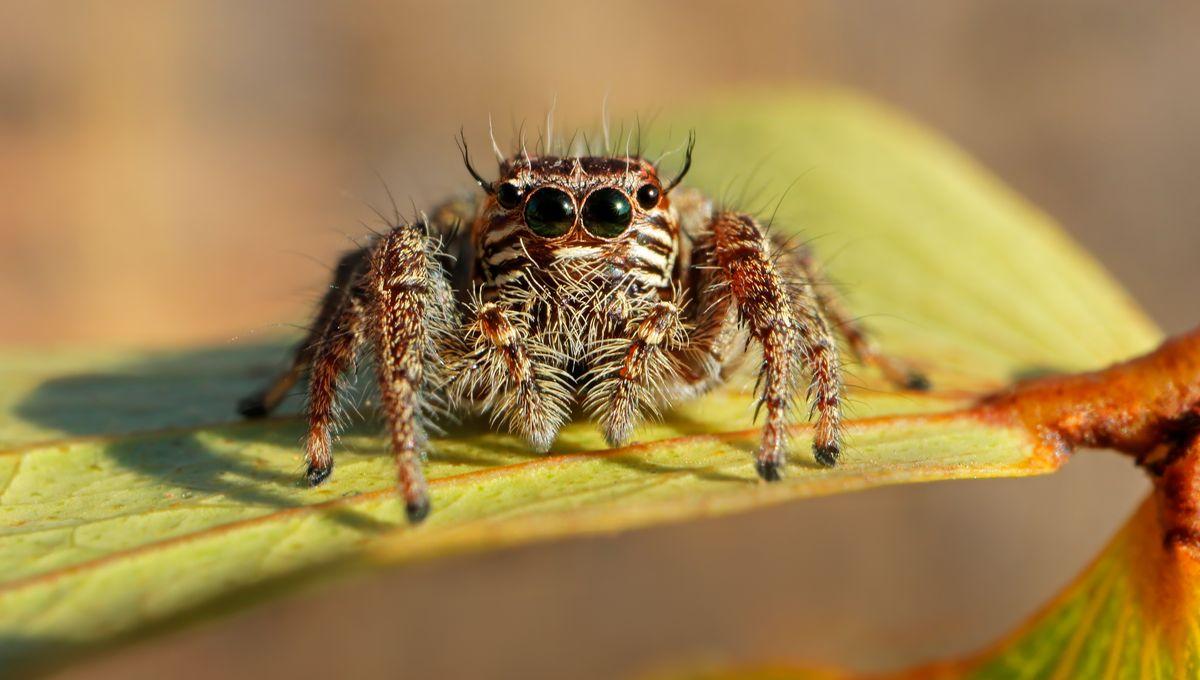-
Feed de Notícias
- EXPLORAR
-
Páginas
-
Blogs
-
Fóruns
Jumping Spiders: With Cute Eyes And Complex Behavior, They're Nature's Most Charismatic Arachnids

With Cute Eyes And Complex Behavior, Jumping Spiders Are Nature's Most Charismatic Arachnids
Even arachnophobes must reluctantly admit that jumping spiders are the cutest of all arachnids. With their fuzzy bodies and puppy-dog eyes, they look less like something from a horror film and more like a cutesy character from a Pixar movie. Beyond their charming appearance, there's also some fascinating science behind this highly successful family of spiders.
Jumping spiders generally do not build webs to catch prey like orb-weavers do. Instead, they tend to use silk for other purposes, such as creating a "safety line" during jumps, constructing shelters, laying eggs, and in some species, attracting mates. Different species of jumping spiders are found on every major landmass of Earth except Antarctica, the freak continent. Most species are predominantly found in tropical regions, although there’s decent representation across more temperate zones, with species appearing as far north as Alaska and as far south as Patagonia in Argentina. Jumping spiders are active predators and don't generally use their webs to catch prey. Image credit: Tran The Ngoc/Shutterstock.com Taxonomically, jumping spiders are a group of spiders that are part of the family Salticidae, encompassing almost 7,000 known species. This makes it the largest family of spiders. New members are regularly welcomed into the family, too. In June 2025, 12 new species and even a new genus of jumping spider were identified in the mountainous regions of New Zealand. Jumping spiders are generally small, with most species being smaller than a thumbnail. However, some species can grow to slightly larger sizes. One of the biggest in North America is the regal jumping spider, which ranges between 6–18 millimeters (0.24–0.71 inches) in length. Another stand-out feature of jumping spiders is their exceptional eyesight. Since they are predators that rely on visual information to hunt, they possess forward-facing eyes that endow them with the highest resolution known for such a small animal. This stands in contrast to other buggy insects, like bees and flies, which have compound eyes that merge information from hundreds or thousands of lenses into a single image. Unlike most arachnids, many species of jumping spiders can perceive a variety of colors. However, it would be wrong to assume this visual system setup allows them see the world like other animals with forward-facing eyes, like Homo sapiens. Along with their primary set, they feature six other secondary eyes, making a total of eight. This enriches them with nearly a 360-degree field of vision (humans, by comparison have a pathetic field of vision that’s approximately 200 degrees horizontally and 135 degrees vertically). Jumping spiders are famous for their complex behaviors, including intricate mating dances. With a jiggle of their bodies and a flick of their limbs, the spiders will engage in a complex act of synchronized seduction to woo would-be mates. Interestingly, research has suggested that jumping spiders might be able to recognize and remember other individuals they’ve met before. This is fascinating behaviour for an arachnid, which are usually considered to be fairly asocial. They also display REM-like sleep behavior, suggesting that they might even dream. In the world of arachnids, jumping spiders are the whole package: beauty, brains, and a flair for drama.
Regal jumping spider
Jumping spiders have incredible eyesight
Jumping spiders: not just a pretty face


